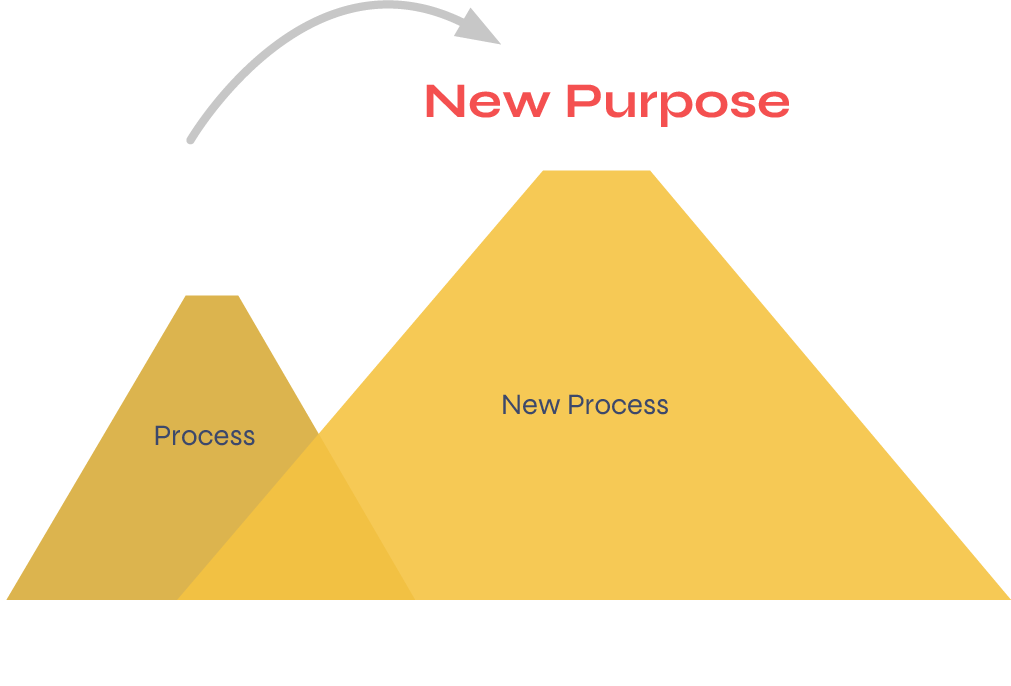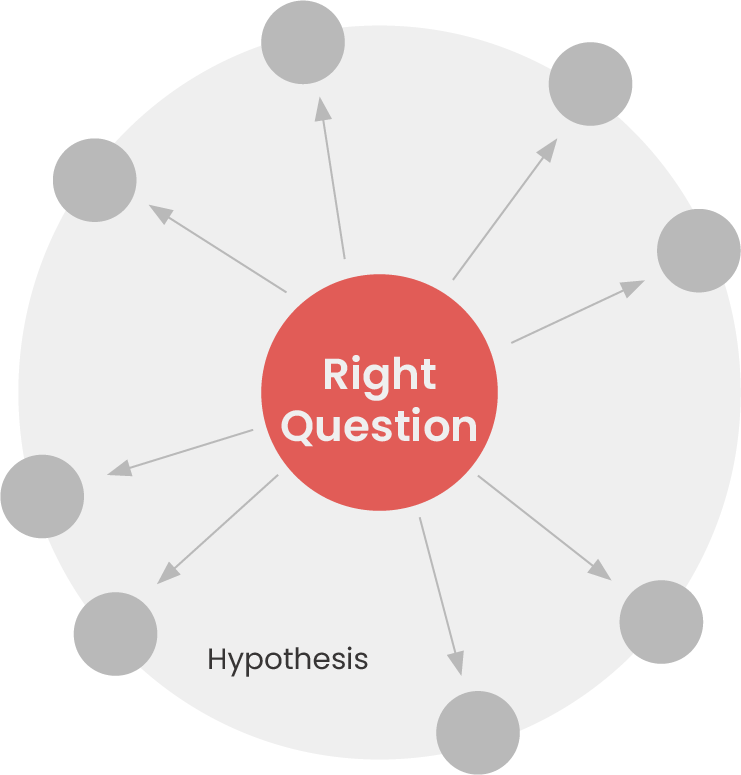
Dream of the future mobility
Field: Experience Design / Generative Design
Duration: 4 Months Year: 2024
Software Used
Collaboration with Honda’s Advanced Design Division as part of a sponsored initiative to explore new purposes in mobility design through futuristic concepts, aiming to unlock the potential for unique and innovative products and services by implementing generative AI within the Design Thinking process. Showcased at ICFF 2024, the exhibition encouraged audiences to “imagine” their own future in mobility.
Issue of Future Value Creation
According to NTT DATA’s 2023 Innovation Guide, research findings only 21% of executives definitively met their innovation goals as reported in the research of 1,000 North American executives across a wide range of industries and company sizes
Companies are currently facing challenges in identifying concepts in creating their future value.
Reasons of no concept
We don’t need concept
Answers have to be made fast
We don’t care about concept
“Clear target” is identified (ex. SDG 2030, Reduced waste)
We need concept but too difficult
Spent months but resulted in no concept, incapable of building concept
Embracing New Technologies for Future Value
Proprietary technology is crucial for many companies, yet it can limit adaptability in the design process. As new technologies emerge, how can companies evolve their purpose to embrace these advancements and drive future value?
Creating Value Through Connection
Premium jet tour creates unique value by connecting existing services across aviation, gourmet catering, and luxury hospitality. By integrating these industries, company curates an exclusive and memorable journey that elevates customer experience and opens new avenues for business.
Value experience story
What would happen if we have happy hour on the go?
Imagine if this becomes a future project for Sports Bars, what would they do?
Not everyone is able to enjoy happy hour during these hours. Bringing happy hour experience will not be limited by physical presence anymore
Seeing to create
Image was created using generative AI tools to visualize the idea.
Visualization is key to creativity: studies from the Journal of Experimental Psychology show that mental imagery boosts creative thinking by 32%. Additionally, Harvard Business Review reports that 65% of people are visual learners, making clear mental images essential for bringing ideas to life.
Era of “Tech-Renaissance”
The “tech-renaissance” is an era defined by the democratization of creativity, fueled by the rapid advancement of generative AI. In this period, everyone can become a creator. Tools like DALL-E, Midjourney, ChatGPT, Gemini empower individual to create art, compose music, write stories, and even develop codes - often without requiring formal training or specialized skills.
Common Biases Against Generative AI
Utilize Generative AI
Operation Thinking
Creative Thinking
This process centers on creating experiences inspired by personal interests and ideas, drawing from cumulative influences in the past that shape current thinking. By leveraging generative AI, we explored and imagined new experiences freely, without constraining ideas to future mobility applications. This open-ended approach allowed for unrestricted creativity, ensuring that thoughts and ideas could flow without limitations.
Ideation
We began by exploring activities, items, and hobbies we enjoyed, looking for interesting combinations. These combinations became the foundation for creating unique experiences connected to each element.
We derived from one experience to create first round of story with generated images
1
From our initial story concepts, we identified the main character and generated additional ideas to evolve the narrative into a new experience.
2
Each story was then expanded with different variations and possibilities to explore multiple perspectives.
Using a more consolidated experience story, we imagine this experience in different scenarios to find innovative ideas by breaking the bias
3
4
Imagining unconventional, almost delusional technologies to push beyond our biases and break through to concepts that had never been considered before.
5
Integrate multiple ideas into a cohesive narrative of interconnected experiences.
Our Creation
Brief
ISE Immersive Simulated Environment (ISE is pronounced I-SEE)
Immersive Simulated Environment (ISE) overlays a user-customized holographic scene onto the real world, transforming spaces into new settings, like a galaxy or Antarctica. It expands imagination by enabling impossible perspectives, such as viewing the world as an ant or exploring the human brain at a life-sized scale.
Following Narrative
Scripts were crafted by ChatGPT based on a detailed prompt, covering content, character development, and encounters with ISE in various forms. ChatGPT helped piece together fragments into cohesive episodes, each hinting at future advancements in ISE. The narrative prompts the question, ‘What do you imagine for your future, and what might come after?
16-years-old, 2060
9-years-old, 2053
23-years-old, 2067
“Eli”
In 2053, 9-year-old Eli lives in a society where most animals are extinct and preserved in labs. Since 2040, cities and wildlife are strictly separated, and real animal pets are banned. Fascinated by animals, Eli uses the Immersive Simulated Environment (ISE), a neural interface technology connected to a quantum network, to experience and learn about extinct and evolved species.
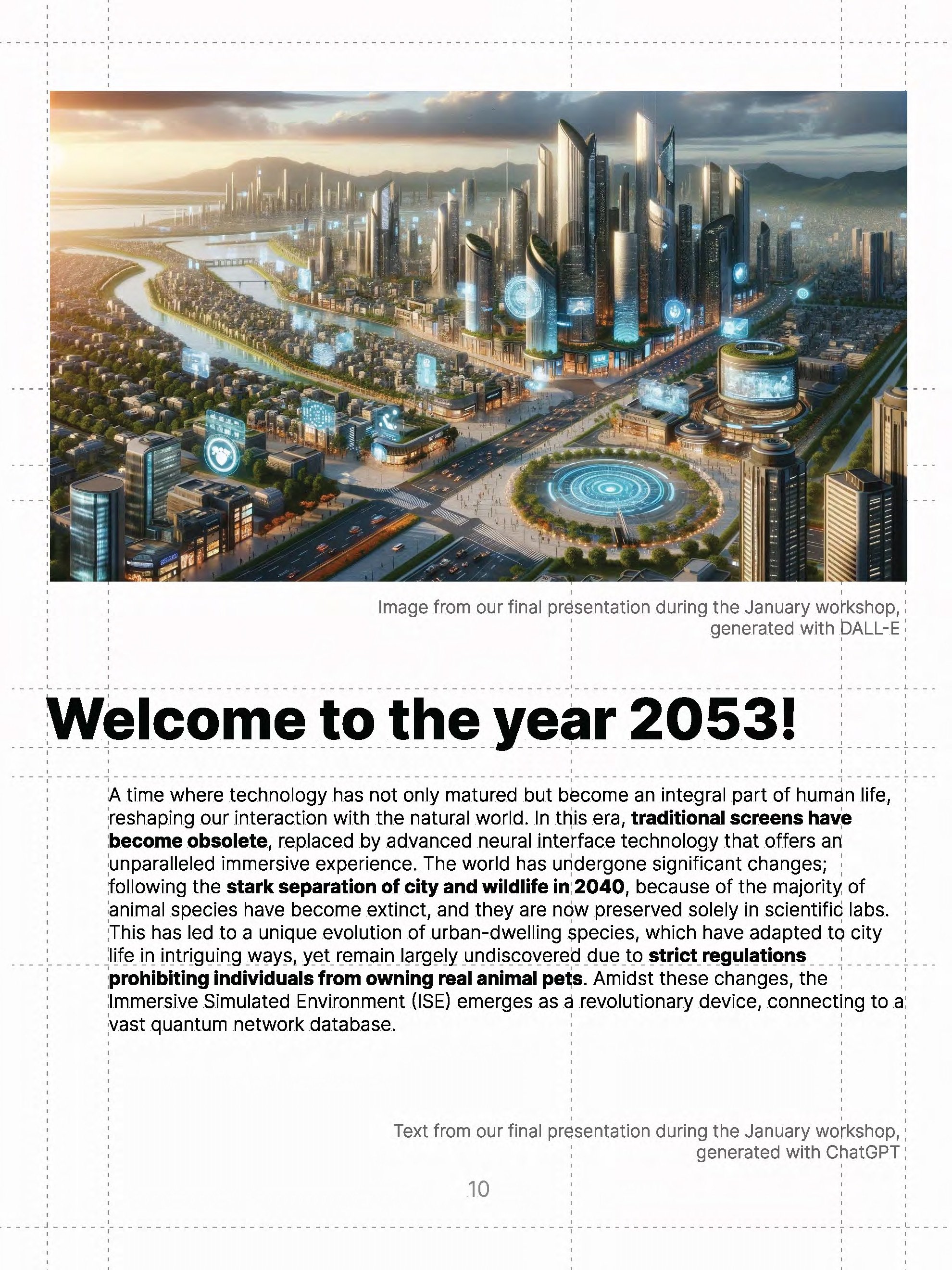


Cognitive Symphony
Exploring Synthetic World Through Neural Safari
In the future, advanced technology like Immersive Simulated Environments (ISE) and the ultra-fast GlideX transport system have transformed exploration, allowing people to experience diverse ecosystems, historical eras, and new learning opportunities. ISE Hubs, now vibrant centers of social and intellectual activity, connect travelers to curated experiences, enhancing knowledge, well-being, and community engagement. This era of innovation offers limitless possibilities for personal growth and discovery
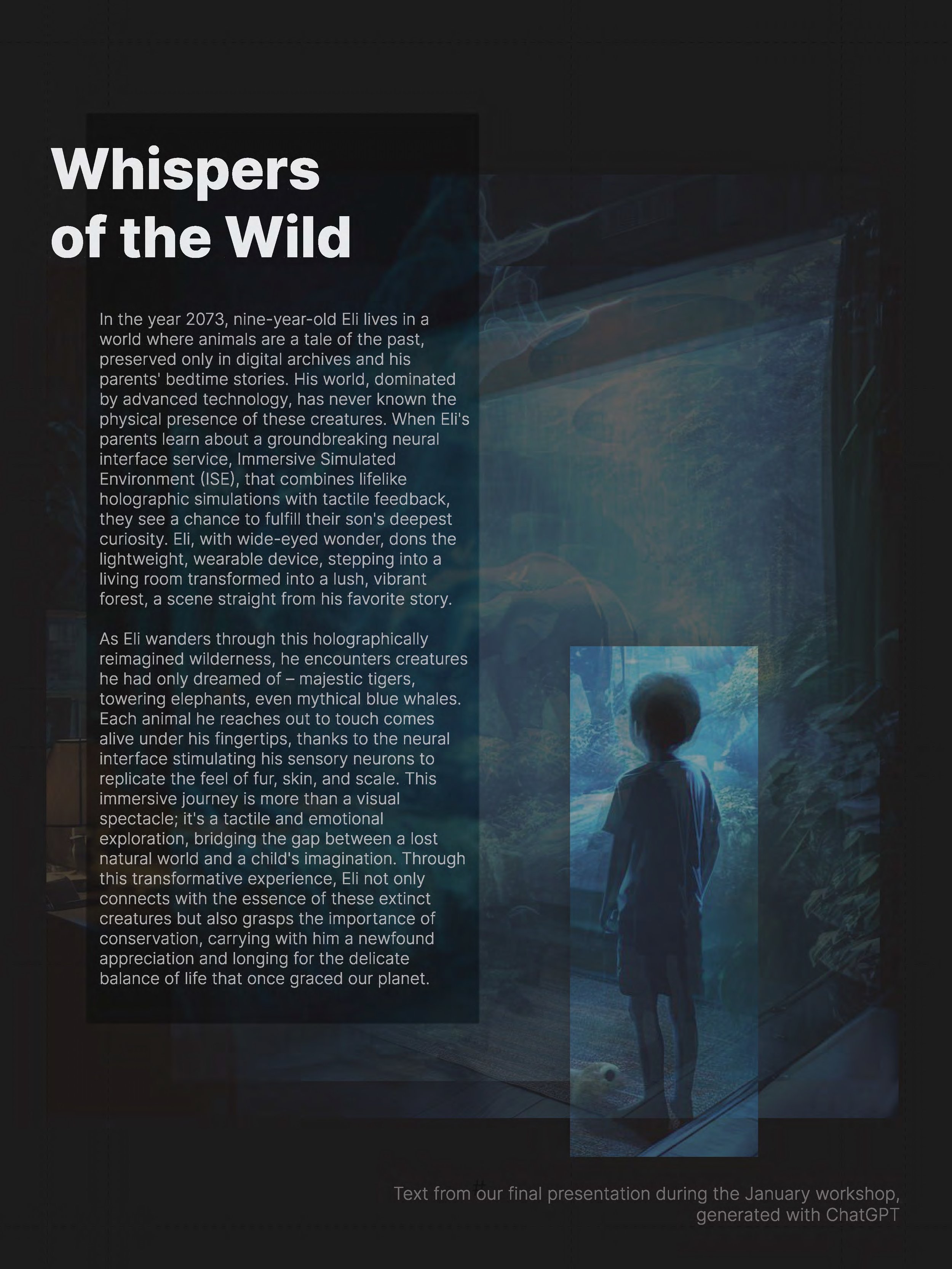
Experience Story I
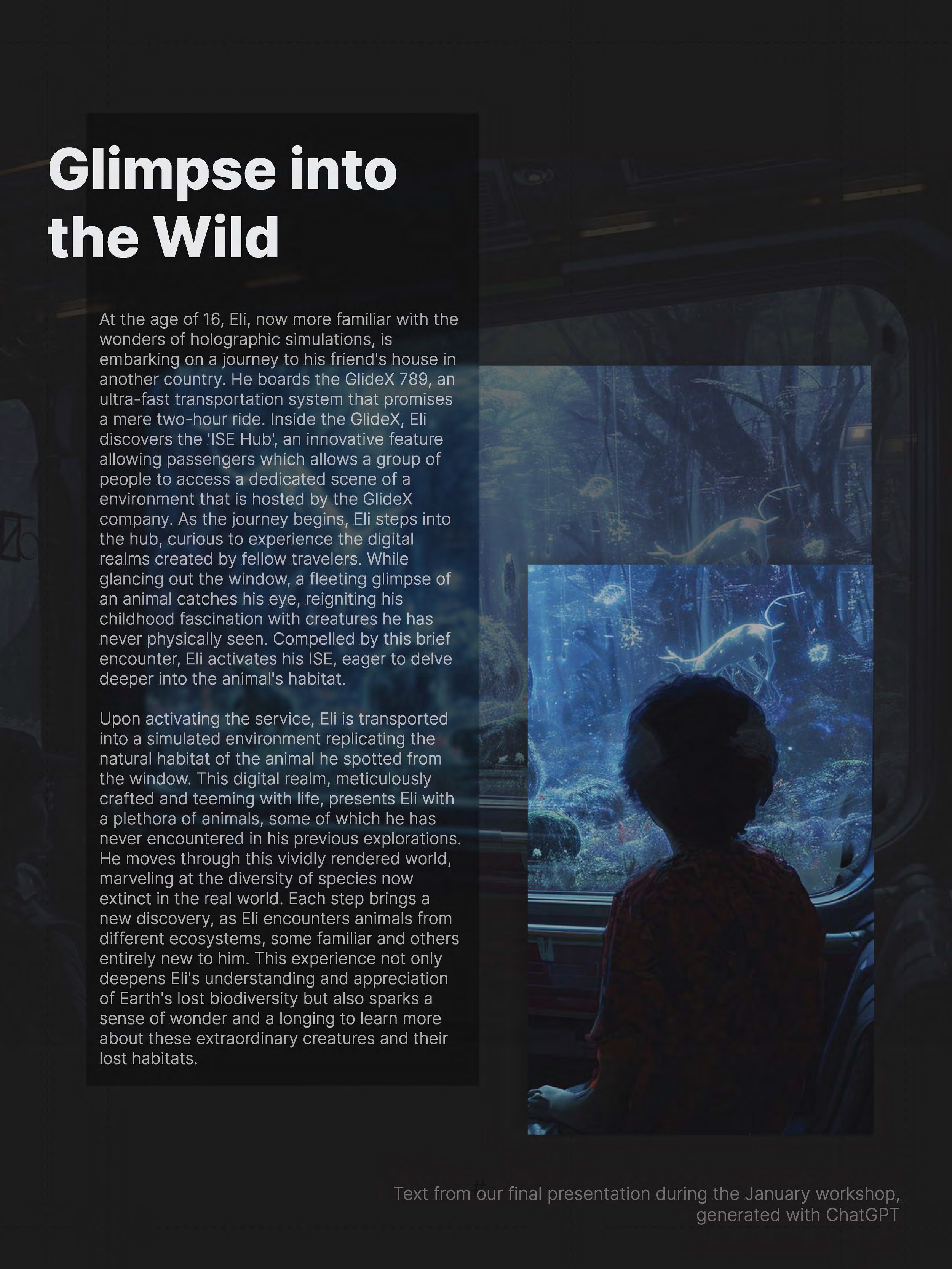
Experience Story II
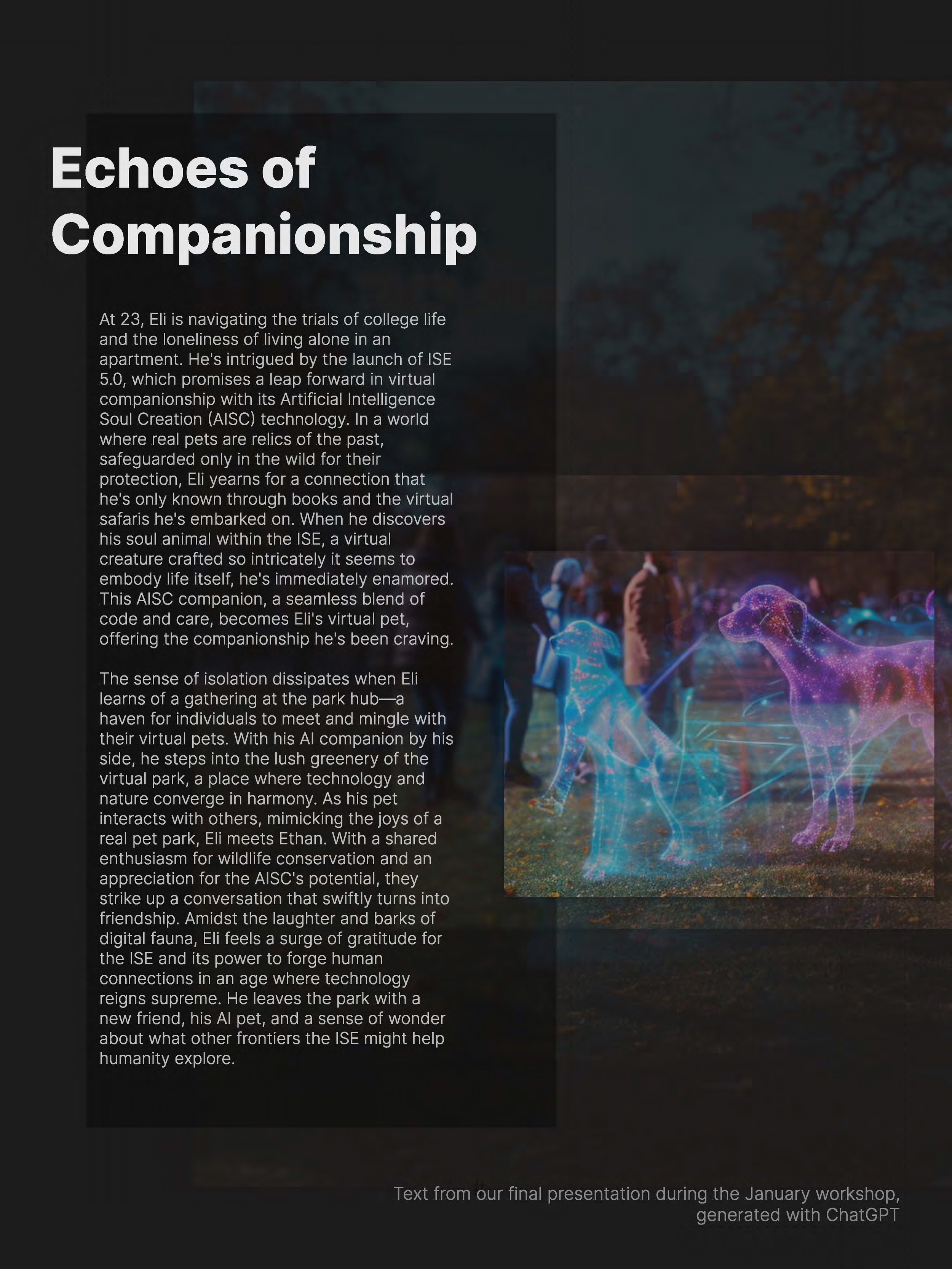
Experience Story III
What’s next
In setting goals for the ICFF x Wanted Design event, our four teams, comprising 20 people, collaborated to define key ideas that align with the event’s purpose. Together, we outlined what was needed to elevate our creations, aiming to inspire attendees with designs that demonstrate limitless possibilities and push creative boundaries.
Design Objective
Encourage attendees to illustrate the future they imagine
Showcasing use of Generative AI to assist creative process
Customized Experience
Ideation & Scenarios
Following Honda team’s plan, we explored methods to effectively deliver our intended experience. Emphasizing a blend of physical, digital, and sound elements for full immersion, we proposed combinations like kiosks, tunnel books, booklets, animated posters, and interactive tickets to create varied scenarios. This process was essential for communicating and aligning our ideas with the Honda team.
User Journey Map
Prototyping & Testing
We initially prototyped the interface in Figma, incorporating interactive elements and external keypads to simulate navigation.
We made several visits to the fabrication site to test and refine our interface, ensuring it functioned as planned.
Given the venue’s connectivity challenges in running Figma smoothly, we converted and built the interface into a local site for stable offline functionality.
Interface
Users select a lifestyle they wish to pursue.
Click to Play
Users select a mode of mobility that resonate them the most
Users get a generated content based on their combination

ICFF x Design Wanted Exhibition
Attendee uses trackpad to make selections through stages and generate their personalized video.
Tablet showcasing our journey to this exhibition
Printed ticket lets attendee revisit their experience with our kiosk
Mobile Experience
Final Setup
Presenting our creation and sharing insights on using generative AI in the creative process for our four-month project.




